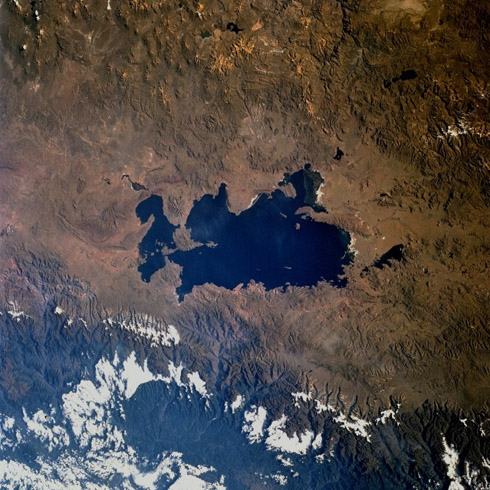Catastrophic Drought Looms for Capital City of Bolivia
*Historical ecology of the Andes indicates desert-like setting on the horizon*
Catastrophic drought is on the near-term horizon for the capital city of Bolivia, according to new research into the historical ecology of the Andes.
If temperatures rise more than 1.5 to 2 degrees Celsius (3 to 5 degrees Fahrenheit) above those of modern times, parts of Peru and Bolivia will become a desert-like setting.
About the image: Lake Titicaca from space. Its outline may look very different in the future. Image credit: NASA (more…)

